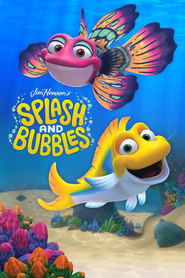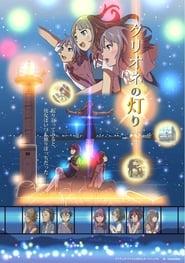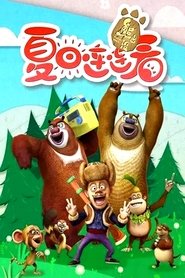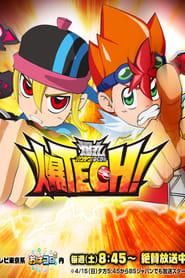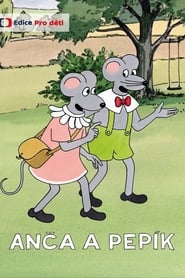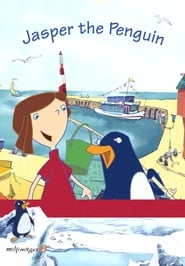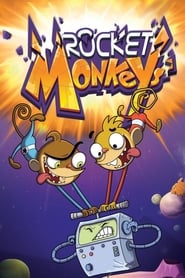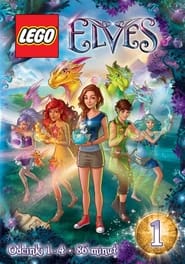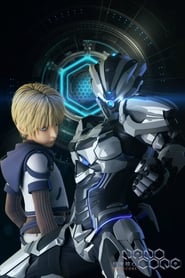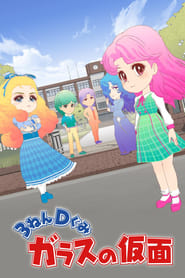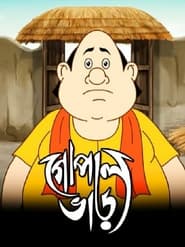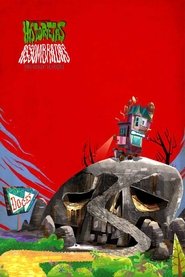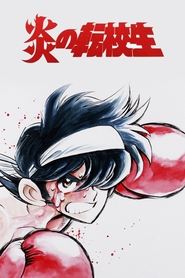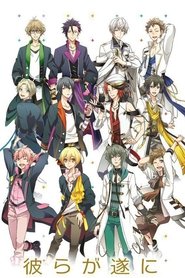Top Rated Animation TV Series on Pantaflix - Page 305
-
Splash and Bubbles
2016
Splash and Bubbles
2016
star 5.3When a yellow fusilier fish settles down in a cozy coral reef town, he introduces the town's sheltered residents, including a Mandarin dragonet fish who quickly becomes his friend, to the amazing places and creatures beyond the town's walls. -
Strange+
2014
Strange+
2014
star 4.7Kou comes to a slum neighborhood in search of his elder brother Takumi and finds him to have become the head of a private detective firm. Kou is drafted by Takumi to do errands and chores in the detective firm, and they come to meet interesting people... -
Lights of the Clione
2017
Lights of the Clione
2017
star 7The story centers around an illness-stricken, constantly bullied orphan girl named Minori. After one rainy day, she doesn't turn up at school, having been admitted into a hospital in a distant town. Two months pass, and the girl's two school friends, Takashi and Kyouko, receive a mysterious email with no sender listed. The email reveals a summer festival taking place at a nearby town... -
Bonnie Bears
2016
-
Baku Tech! Bakugan
2012
-
Anča a Pepík
2017
-
Jasper the Penguin
2003
Jasper the Penguin
2003
star 7Not so very long ago, Jasper lived at the South Pole with his family, as is normal for penguins. But one day it happened: in his unbounded curiosity, Jasper had dared to go too far to the edge of the breaking ice cap. Suddenly there was a loud cracking noise from behind him and before he knew it, he was sitting on an ice floe, which, propelled by the current, pulled him ever further towards the horizon... until he drifted in to the harbour of a town. He looked for a cool and damp place to sleep and finally found just such a spot next to an old refrigerator, which stood in a forgotten corner at the very back of a junk shop. Since everything was so new and exciting, Jasper decided to stay for a while. However, so that his family would not be worried about him, he sent them regular reports of his experiences and observations in his "new" world. And what could be a better way of doing that, than sending a message in a bottle... -
The Adventures of Huck Finn
1994
star 7We begin our adventure by the banks of the Mississippi River, where we see life through the eyes of a young boy named Huck Finn. Huck is a resourceful and spirited lad who knows how to survive on his own. He flees his father, and travels with Jim (a runaway black boy). He learns much about life from Jim. Tom Sawyer is a mischevieous adventure hungry boy who has a zest for life. He's a true romantic at heart, but not above a little trickery to get his own way, or to get out of work. Tom's life really starts to become complicated when he meets Huck. Together with Jim, they begin a series of adventures. -
Rocket Monkeys
2013
Rocket Monkeys
2013
star 8This Canadian cartoon focuses on two monkey brothers named Gus and Wally who are in outer space working as GASI agents (Galactic Animal Space Institute agents, so no pun intended!). They are accompanied by their robot friend YAY-OK and their boss Dr. Chimpsky as they are sent on missions to accomplish different tasks, including defeating their enemies. -
LEGO Elves
2015
LEGO Elves
2015
star 4Emily meets four magical elves and together they journey through Elvendale to find a way home. -
Fantômette
2000
-
Nanocore
2014
Nanocore
2014
star 9Nanocore is a science fiction Chinese animated series in 3D. The stage of the story is established on a fictional planet Birthigin. In this young planet, humanity will never stop longing for a bright future despite reason and fear. In revolutions and evolutions, humanity keeps challenging the Creator, and which eventually induces contractions intensified. People choose to wake up and struggle for their own ideals. They end the peace and angers sweep the whole planet, resulting in outbreak of the crisis known as Purple Fog. In time of humans facing their odds of survival, the plan N.S.P led by the elite keeps frustrating until NanoCore's involving. It brings the plan his birth. As the existence, that the elite thinks should lead the development of human weapons, however, he breaks shackles of fate, and arrives at a land where faith no longer exists. He learns to make choices and grows up with them, and the dim future of Birthigin thus begins to change. -
Marginal#4 Kiss Kara Tsukuru Big Bang
2017
star 7On February 13, as snow flurries dance in the air, a new idol unit is born at Pythagoras Production. They are the idols who will deliver their kiss to the ends of the galaxy: "Marginal #4." Its members, Atom Kirihara, Rui Aiba, L Nomura, and R Nomura, put all their effort into their entertainment career for the sake of the fan supporting them! They continue to mature as idols along with the senior unit pulling the entertainment industry forward, Lagrange Point, and the younger unit preparing to make their debut, Unicorn Jr. But when they step off the stage, they're ordinary high school boys with some chaotic student lives! This is the tale of Margninal #4, a school slice-of-life about idols that shine brighter than the stars. -
Rescueman
1980
Rescueman
1980
star 6.5Burning with ambitions to become the most beautiful woman, the most renowned scientist, and the greatest hero the world has ever known, three villains, Atasha, Sekobitchi and Duwarusuki, unite. The trio are Time Patrollers, the keepers and protectors of the annals of history. But, this is only a cover for the trio, as the villains are league with a nefarious leader, who is trying to alter the course of history to suit his desires, and, under his instructions, the trio travel in time with the aim of tampering with recorded history. Only Hikaru and Nana, disguised as the Otasukemen, stand between the villains and their goals. -
The Glass Mask Year 3 Class D
2016
star 3.7In a modern-day school, we find Maya, Ayumi, Chigusa, Yuu, and the chairman, Masumi. They are the ultimate actors, who have time-traveled from the Glass Mask generation to the modern day to make the hearts of modern-day people burn with passion. Maya, Ayumi, Chigusa, and Yuu rely on their passion and actors' spirits to take on people with all sorts of worries. Chairman Masumi, on the other hand, seems to think the modern age doesn't need saving... -
Gopal Bhar
2015
Gopal Bhar
2015
star 4Gopal Bhar was a legendary court jester in medieval Bengal. He was in the court of Raja Krishnachandra, the famous king of Nadia in the 18th century AD. Such was the genius of Gopal that the King considered him as a Navaratna of his court. His statue can still be seen in the palace of Raja Krishnachandra. Stories about his exploits are narrated in Bengal to this day and are immortalized in countless short stories. The stories are short, beautiful, humorous and have a specific social message. Gopal Bhar is famous for stories of his wisdom, in which he outwits other fellow courtiers. -
Time Travel Girl
2016
Time Travel Girl
2016
star 5.3Mari Hayase is on a mission to go back in time and meet eight of the most prominent scientists and inventors in history. With the help of her two friends Waka Mizuki and Jun Mizuki she’ll find herself up close and personal with famous figures like Benjamin Franklin, Alexander Graham Bell, Thomas Edison, and so many more! What’s her purpose and mission? Hopefully not getting stuck in the past! -
Haunted Tales for Wicked Kids
2013
star 8.7The series revolves around the adventures of Pepe, a wicked boy who lives in a dark mansion with his grandmother, a witch who works selling artifacts and magic potions in the internet. She always send her grandson to deliver them. Each episode Pepe and his friends (Marilu, Roberto, Guto and Gastón) undergo supernatural adventures facing the various monsters in the city. -
Blazing Transfer Student
1991
star 6.7One bright fall day, young Takizawa Noboru transfered to Honjakuniku High, arriving an hour after the start of classes as the principal instructed him. Everything seemd to be going fine, until the mildly overzealous hall monitor Jounouchi Kouichi decides to charge him with tardiness, and administer punishment... see in THIS high school, any argument can be won through sports or combat, leaving Takizawa in a bit of a pinch until the lovely Yukari steps in and saves him from making himself even later than he is. But that's just the start of Takizawa's troubles... the school tough, Ibuki Saburou, has set his sights on both mashing the new meat to a pulp, and winning the hand of Yukari away from any potential suitors... in the boxing ring! Will Takizawa be able to defeat Ibuki, win the love of Yukari, and still make it to Calculus on time? Of course, it's all in a day's work for a Blazing Transfer Student! -
Tsukiuta. The Animation
2016
star 6Six Gravity and Procellarum are two rival male idol groups who happen to live in the same dorm. Six Gravity is made up of young men who represent the months of December to May, while Procellarum’s members represent June to November. Follow the daily lives of these twelve young men as they deal with the stresses of idol-hood, school, and living together.
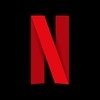 Netflix
Netflix
 Amazon Prime Video
Amazon Prime Video
 Apple iTunes
Apple iTunes
 Apple TV Plus
Apple TV Plus
 Disney Plus
Disney Plus
 Google Play Movies
Google Play Movies
 Paramount Plus
Paramount Plus
 Hulu
Hulu
 HBO Max
HBO Max
 YouTube
YouTube
 fuboTV
fuboTV
 Peacock
Peacock
 Peacock Premium
Peacock Premium
 Amazon Video
Amazon Video
 The Roku Channel
The Roku Channel
 AMC+
AMC+
 Kocowa
Kocowa
 Hoopla
Hoopla
 The CW
The CW
 Vudu
Vudu
 Starz
Starz
 Showtime
Showtime
 PBS
PBS
 Pantaflix
Pantaflix
 FXNow
FXNow
 Tubi TV
Tubi TV
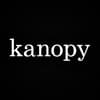 Kanopy
Kanopy
 Comedy Central
Comedy Central
 Crunchyroll
Crunchyroll
 Microsoft Store
Microsoft Store
 Redbox
Redbox
 Sun Nxt
Sun Nxt
 ABC
ABC
 DIRECTV
DIRECTV
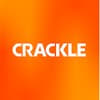 Crackle
Crackle
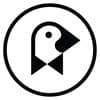 Fandor
Fandor
 Plex
Plex
